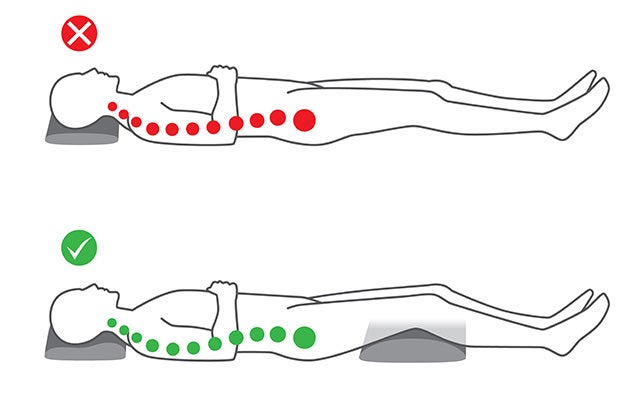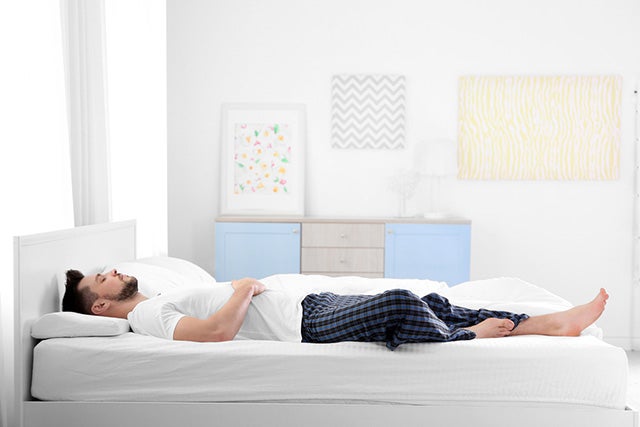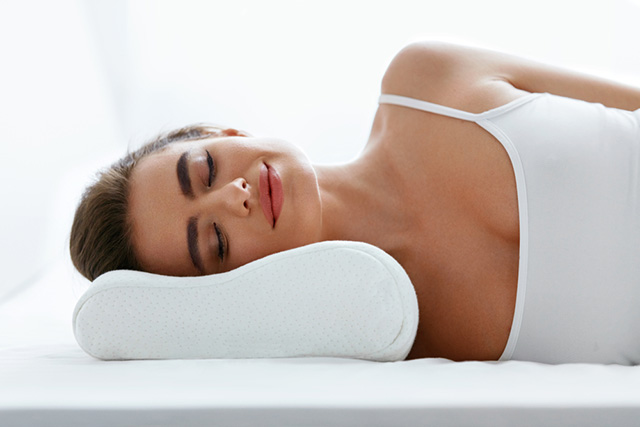Having good posture can turn heads and represent confidence in a person. It makes you look distinguished and gives an air of majesty. But that’s not all a good posture can do for you.
Good posture can improve blood flow and regulation in your body. It improves the strength of your tendons, ligaments, and muscles. You’re happier and there is more direct blood flow to your head.
Good posture is also the best way to keep back pains at bay. If you don’t maintain a proper posture, then your back isn’t the only part of your body that is going to suffer, but your neck and shoulders too.
How to Improve Your Posture
Surely, you’ve had a friend or relative knead your back, telling you to stand upright. As annoying as it is, they’re doing it to improve your posture, which comes at no loss to you if you do. In order to prevent them from watching your back, there are some things you can do on your own to improve your posture.
- Easiest tip of them all is to stand tall. No slouching or crouching, don’t let you head hang or back curve.
- Your arms should hang naturally at your sides. You shouldn’t tuck them in your pockets or hold them in front or behind you.
- Keep your shoulders back, don’t let them sag in front of your body. This will only encourage a hunch.
- Keep your head high and level, ensuring your neck stretches upward and not forward.
- Your feet should be shoulder-width apart. This roots your stance better and helps you keep balance while you’re upright.
- When you sit, make sure your back is straight. If there is a table in front of you, don’t lean over it. If the chair sinks back, don’t slouch in it. Fix the back or maintain a straight back when lying into the chair.
These are simply some general tips you can follow, there are many more which ensure your posture is upright and proper.
Does Sleep Affect Your Posture?
Yes, of course, sleep does affect your posture. It’s very important to pay attention to how you sleep since you’re in this specific position for an average of 7 to 9 hours every day. If your spine, neck, nerves, or muscles are strained during this time, you’re going to feel it later.
The natural shape of your body is an S-curve. Throughout every night, this is the shape you’ll want to maintain. It’s not easy if you’re not used to it, but it’s certainly doable. We’ll discuss more on this later on.
Sleep Positions and How They Affect Your Posture
There are three typical sleep positions which a person could sleep on; their side, stomach, and back. Each of them has their own effect on your posture and some are more ideal than others.
— Stomach Sleepers
This is not a good position to be sleeping in. Your neck is twisted to the side for you to breathe properly at night. This builds pressure in your spinal nerves and muscles which tenses your posture up rather than letting it sit naturally.
— Side Sleepers
Sleeping on your side is a little better than sleeping on your stomach. It’s still an ideal position to keep your spine aligned and it’s also the best sleeping position for pregnant women in their third trimester. A thicker pillow is a good idea with perhaps one in between your knees.
— Back Sleepers
Back sleepers have the best sleeping position. Sleeping on your back keeps your neck, shoulders, and spine properly aligned throughout the night. If you’re using a proper, comfortable pillow then you’re only optimizing your sleep position. The best pillow in this case is a flat one, so your neck is not too elevated.
One issue when it comes to back sleepers is that you’re most probably going to encounter snoring habits.
How to Improve Your Sleep Posture
Now that you know which positions are better to sleep in, it’s time to learn some handy tips on how to work on improving your sleeping posture. The more you work towards that straight, relaxed back, the less pain there will be waiting for you in the future.
Tip 1: Control Your Head Pillows
The more pillows you have underneath your head, the more strain there is on your neck. It forces you to crane your neck forward, which you’ll start to notice during the day as well.
Sleeping on your back or stomach calls for a thinner, firmer pillow which contours to the natural crane of your neck, and doesn’t force it forward. Some people would even advise not sleeping with a pillow at all if you’re a stomach sleeper. If you sleep on your side, you may need a thicker pillow to keep from crushing your shoulder underneath you.
Tip 2: Stay Away from Your Stomach
The ideal solution is to simply train yourself not to sleep on your stomach. Your neck is craned awkwardly while you sleep on your side, you end up turning it in different directions in order to breathe, which creates an unnatural curve in your spine. This can lead to neck and shoulder pains.
If you want to change your position, then place pillows around yourself so you sleep either on your side or back. If you sleep with a partner, tell them to turn you if you rest on your stomach during the night.
If you can’t seem to change your position, then there is fortunately another way to go. You can place a pillow underneath your pelvis and sleep with a thin pillow or no pillow underneath your head.
Tip 3: Use Pillows to Align Yourself
Pillows are your best friend at night when used properly. If you detect any places where your body is sagging or not aligned properly, wedge a pillow underneath you to correct your posture. There are small circular pillows, regular pillows, wedge pillows, and even full body pillows you can use.
Tip 4: Side Sleeping with Some Considerations
Consider this; when you’re sleeping on your back or stomach, you’re closer to the bed and therefore your spinal alignment is flatter and more natural. But when you sleep on your side, you elevate yourself on your shoulders and arms, which can cause your neck to hang. This can develop into neck pains if you don’t fix it.
The best way to handle it is to get a thicker pillow. One that is plush and thick will allow you to comfortably sink into your pillow while also getting the support you need. If you have broader shoulders, then perhaps you could use two pillows to keep your alignment proper.
Tip 5: Move Your Whole Body, Not Your Waist
We all move around a little at night. Whether it’s to find the colder part of the bed, or you feel too stiff in your current position, everyone shuffles a little before finding the perfect position. But this subconscious shuffling could be the issue you’re facing. When people move around at night, most people don’t notice they’re moving only a part of their body, not all of it. If only a part of your body is moving, you’re wrecking your spinal alignment.
The solution? Move your whole body whenever you want to change your position rather than a part of it. If you’re moving from one side to another, make sure you turn completely, not just your waist, not just your legs, not just your neck. Keep your ears, shoulders, and waist aligned to ensure you’re keeping a straight posture at night, not a twisted one.
What Else Can You Do?
While sleep posture is one thing you have to work on, there are other things you can do for yourself to make sleeping easier and more comfortable.
Choose a Better Mattress
This depends on your preference mostly. The bottom line is your mattress should be the ideal level of comfort for you. If you like soft and plush mattresses, then get one. If you prefer sleeping on a firm mattress, then get one that maintains its shape. Don’t compromise on your mattress since this results in you compromising your sleep quality. You want to wake up without sores, aches, and pains.
Choose a Better Pillow
Your pillow supports your neck, head, and the start of your spine. The right pillow can help you wake up with ease, while the wrong pillow will have you waking up with cramps for days. Your pillow should support your neck and back’s natural curve. Broader shoulders might mean you need a thicker pillow while a slim, thin figure could mean you need thinner ones. The best middle ground is to get a pillow which has adjustable filling. Try to change your pillows every year or so.
In Conclusion
Now that you know how to improve your sleep posture, there is no excuse to tolerate intolerable back, neck, and shoulder pains. Do yourself justice and fix your sleep positions. If you know anyone else who suffers from chronic back pain, send this article to them so they can help themselves sleep better and leave a comment below on your own experiences. And check out our other tips for getting a better night’s sleep right here!
Photo credit: fizkes/Shutterstock; metamorworks/Shutterstock;
solar22/Shutterstock; Africa Studio/Shutterstock;
NotionPic/Shutterstock; Africa Studio/Shutterstock;
puhhha/Shutterstock; aSuruwataRi/Shutterstock;
PKpix/Shutterstock; Micolas/Shutterstock












